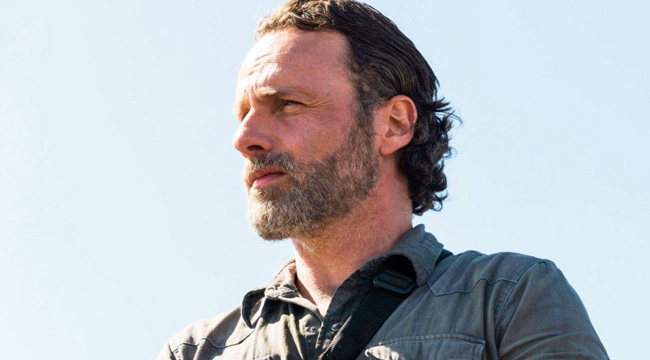
After 16 years and 193 issues, Robert Kirkman’s The Walking Dead comics — the foundation for nine seasons of AMC’s television series — have concluded their run with an issue that was surprising not in the way it ended but in Robert Kirkman’s decision to end it so abruptly. The end of the comic series is not expected to affect the television universe, which will continue likely beyond Kirkman’s source material, although it is possible that whoever is running the series when it finally comes to an end will ultimately choose the same conclusion.
If I were grading the ending of The Walking Dead as a series finale, I’d probably give it a B or B-. It’s not particularly exciting, twisty, or shocking, but it does in many ways feel right. Honestly, I feel as though the entire ending was rushed, as though Kirkman had written himself in the corner and decided simply to bring it to a close. There was a lot of possibility contained within The Commonwealth — a civilized community of about 50,000 people with its own military and sporting venues that divided itself in classes — that Kirkman opted against exploring more deeply. Instead, he decided to use it basically as a tool to kill off Rick Grimes in something of an anticlimactic fashion. His death wasn’t that interesting, and his shooter was a “nothing” character, but not so nothing that there was poetic justice in it, like that character killed off at the end of The Wire.
The final episode, honestly, was more like an epilogue to Rick’s death than a new adventure. Set a decade (or more) into the future, it sees childhood friends Carl and Sophia (both of whom are not dead in the comics, but there were killed off on the TV show) as a married couple. They have a daughter named Andrea. Eugene is working on a railroad. Aaron and Jesus are still together. Negan is still out there, somewhere. Maggie is the new President of the Alexandria Safe-Zone, and humanity has made it, more or less. No cure for the virus was ever found, but the zombies themselves do not pose a threat.
In fact, the zombies are literally reduced to a circus sideshow. Hershel Rhee — the son of Maggie and Glenn — operates a traveling road show of walkers. In the central storyline of the final issue, zombies from Hershel’s sideshow roam onto Carl’s property and he kills them. Carl is brought up on charges of destruction of property, and a trial is held in front of the Safe-Zone’s judge, Michonne. During the trial, there’s a big old-man-yelling-at-clouds to-do about how dangerous zombies used to be, and how the younger generation doesn’t appreciate what a threat they once were. Michonne — Judge Hawthorne (the first ever mention of her last name) — remembers the threat zombies once posed and acquits Carl of the charges.
Carl, in turn, returns home, and reads a book written by his wife Sophia about all the adventures and challenges faced by his father, Rick Grimes. The daughter of Carl — who is still wearing that eyepatch — makes fun of the way that Carl is always talking about her grandfather, but ultimately asks him to tell her one more story about Rick. The issue ends with Carl peacefully rocking in a chair, reading the book to his daughter.
And that’s it. It’s not as exciting as Kirkman’s original vision for ending the comic series, but it is a sweet and hopeful one that illustrates that all the effort Rick Grimes put into keeping his people safe ultimately paved the way for the continuation of humanity. Ultimately, the comics end in much the same way that the character of Carl on the television show had envisioned.
Source: Image Comics






